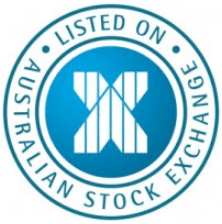
By Evan Lucas for Chris Weston, Chief Market Strategist at IG Markets
The Chinese dragon facing off against the market bear
The Chinese dragon is again facing questions about its stability, its place as the engine room for global growth and its financial affairs as the HSBC flash manufacturing PMI data hits an eight-month low.
I for one am a firm believer in the China story; I believe the central government and PBoC see the longer term picture of a consumption nation with liberal currency flows and a stable banking sector. For a market economy that allows increased access to state and private enterprise, and a population that is being readied for mobilisation as employment increases through urbanisation and development.
However, to reach this endgame no doubt there will be short-term market volatility. The market has witnessed an array of issues from China over the past 12 months as debt financing and debt ratios peak as credit start to max out. Over the past month the development surrounding copper and iron ore as collateral instruments has sparked fears of market dumping and the fact 60%-80% of copper in China is believed to be under collateral financing has seen copper prices breaking down several key support levels. This shows that the bears are in full control of the industrial outlook for China.
There have been several reports over the weekend that back this idea as questions about the shadow banking role in creating bubbles throughout the Chinese market emerge.
The leverage to property development, wealth management products and growth manufacturing has been difficult to follow. However, lessons learnt from the GFC suggest following domestic investment firms. The reports show that several of these entities have borrowed from the shadow banking committee and invested it into fixed assets and corporate bond-like products. The concern here is the breakdown of the first commercial bond two weeks ago, coupled with Premier Li suggesting that more defaults are unavoidable, which has the PBoC on edge.
The HSBC numbers showed output, new orders, quantities (output and import) and prices (output and import) are all contracting at a faster rate than previous months. This means these investment trades are going to break down even faster as asset quality and fixed return see value collapsing – more defaults. The PBoC has announced over the weekend that it is willing to accept these defaults and will look to continue its reform agenda of wringing out speculative lending, but this is going cause jitters.
The data also lends itself to being extrapolated out to GDP estimates, and this is where the Chinese Dragon is really struggling against the market bears. The print suggests that GDP could now be even lower than 7% once you factor in the industrial production figures from last week.
This gloom leads to a very predictable outcome – stimulation. It has already begun with the announcement that domestic demand is to be stimulated through the acceleration of the current state-produced infrastructure pipeline.
It is also likely to see the PBoC leaning on the exchange rate for longer. Although the fixing rate moved to CNY6.1452 from CNY6.1475, the spot rate 6.2188 is stronger than Friday’s close. However, the USD found strength after the print, suggesting tomorrow fix will see the PBoC looking to add support.
The perception of future stimulus is emulated in the markets today with regional majors in the Hang Seng, the Nikkei and the Shanghai Composite all turning green as the prospect of some form of intervention.
A tale of two blocks in Europa
Europe looks like feeling the pinch from the weak finish to the US session on Friday and poor read from China today, however this may moderate if growth is seen from France and German as both countries release their service and manufacturing PMI data.
French manufacturing has been in contraction for 13 months and forecasts expect this to continue, but February numbers were revised up, and at 49.8 could see France breaking the trend. France remains a point of contention as its manufacturing economy has been stuttering, signs of recovery will continue to see the CAC marching to its own drum.
Germany on the other hand has been in expansion for eight months and that is likely to continue which should be market positive for the heavily covered manufacturing DAX however the expansion read is likely to come in a bit after the Eurasian events of the last four weeks as Russia is Germany’s largest European trading partner.
If both reads are ahead of expectations the dilemmas originating from China and the profit-taking from the US on Friday are likely to be dismissed and should see Europe register green on screen as the two central block countries are likely to see the eurozone’s overall manufacturing and services PMIs in the green.
Considering the periphery is taking advantage of cheap lending and has seen some of the largest bond raising in the eurozone since the European debt crisis, the recovery story looks to be gaining momentum. This will also feed into a turnaround story for China as one of its largest consumers sees stability growing.